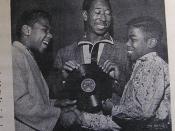Aim:To determine the effects of the pulse and skin temperature in humans when the intensity of activity changes with a cycling machine and monitoring the biological variables as above mentioned by using a strapped-on write pulse monitor and a skin temperature monitor as the Subject cycles. The intensity is determined by the rotations per minute (RPM, indicator is built into the cycling machine), and the cyclists increases it to increase the intensity of the exercise.
Hypothesis:I believe the pulse will increase along with skin temperature as intensity of the exercise increases, because the muscle cells will start to respire faster and release more energy and produce more carbon dioxide, this will trigger the reflex action to increase the pulse. The pulse increases to deliver the extra oxygen needed by the muscles. That means the pulse will increase as exercise intensity increases.
The skin temperature will also increase as the blood flow increases.
The increased blood flow means more blood is flowing through the capillaries beneath the skin. This results in an increased heat loss and an increased skin temperature.
NOTE: The skin temperature is merely a measure of heat loss through the circulatory system. Heat loss is most prominent in places with most blood flowing through (e.g. Places where there are the most capillaries, i.e. The face).
Variables:Independent: Pulse Rate and the Skin TemperatureDependent: Rotations per minute on the cycling machineControlled Variables:1.Temperature of the roomThe temperature of the room can alter the Subject's initial temperature and can cause the final temperature to be higher than it actually is.
2. Exercise Time on each section of RPMEach section gets an equal amount of exercise time before advancing in RPM, this is in complement with controlled variable no.43. Volume of oxygen in air around the locationIf there is a lower oxygen...


